Osteoarthritis is the most common joint disease in medical practice and is associated with degenerative and dystrophic processes in the joints. It is mainly caused by the aging of the body and the destruction of joint tissue. However, according to experts, slowing down the destruction process, delaying osteoarthritis and long-term maintenance of healthy joints are entirely within human power. MedAboutMe presents the top causes and ways to prevent this disease.

- How to walk properly so as not to damage your joints
- Health benefits of walking
- Primary prevention of osteoarthritis
- secondary prevention
- Disadvantages of Nordic Walking
- Precautions to be taken when practicing Nordic Walking
- Peculiarities of the Bubnovsky method
- When is the application recommended?
- How to do it
- Contraindications to the use of gonarthrosis
- Invaluable benefits of movement
- Six basic principles of correct movement
- The right exercise program with a physical therapist
- Exercise 1
- exercise 2
- exercise 3
- exercise 4
- exercise 5
- Types and uses of therapeutic exercises
- Bubnovsky method
- What is the impact of physical activity?
- Rehabilitation doctor Shishonin explains how to get rid of joint pain without pills
- Beat
- Coping with obesity and diet
- Physical activity to prevent arthritis
How to walk properly so as not to damage your joints
Many experts around the world have long recognized health-enhancing walking as a universal form of physical activity. The sport can be practiced by people of all ages, even children. Depending on the physiological parameters, there are specific conditions for each group. dr Shishonin explains how to walk properly so as not to damage your joints.
Interesting facts. Scientists have shown that regular walking reduces the risk of breast cancer by 30 %, reduces the intensity and frequency of menopausal hot flashes, and relieves menstrual pain. It is estimated that the average person in the world walks about 402 000 km in their lifetime.
Health benefits of walking
Walking in leisure time is recommended for everyone, regardless of gender, age, physiology and state of health. Walking activates the energy metabolism, strengthens the immune system, activates the muscles, the internal organs and the cardiovascular system. Plus, it helps maintain a healthy weight.
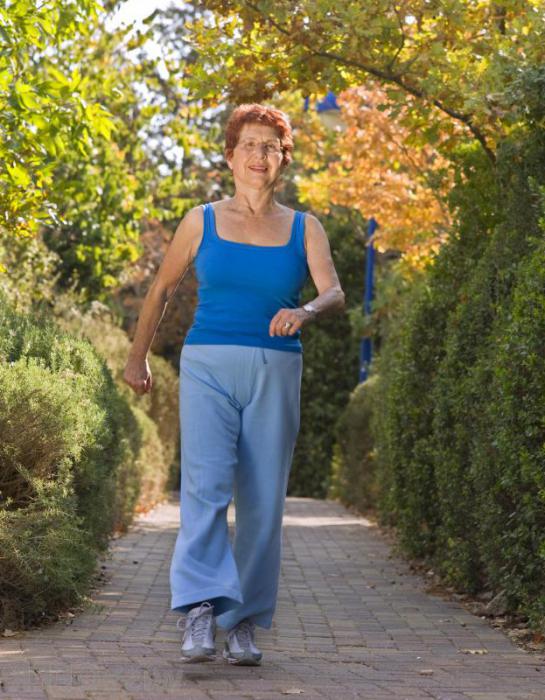
Daily walking can achieve the following effects
- Improve your general well-being;
- strengthening the heart muscle;
- increase in stamina;
- strengthening of the muscular skeleton;
- lowering of intraocular pressure;
- to prevent thromboembolic diseases, myocardial infarction and stroke;
- reducing the risk of cancer
- to improve mood;
- optimize brain function
- Lowering blood cholesterol levels
- normalization of the digestive system;
- Reducing the risk of developing type II diabetes
- to normalize sleep
- Reducing feelings of helplessness
- increase life expectancy;
- Activation of the immune system
- to increase lung capacity and depth of breathing;
- eliminate stress phenomena;
- Strengthening of the musculoskeletal system.
Primary prevention of osteoarthritis
Primary prevention is a set of actions that help keep joints healthy over the long term. It should start in early childhood. Its basic principles are:
- fight against obesity;
- Regular physical activity;
- Watch your posture;
- use of comfortable and quality footwear;
- Know and observe the basic laws of body biomechanics;
- avoiding situations that could lead to injury;
- be aware of the need for resilience and other general strengthening measures;
- Protect yourself from hypothermia and treat any illnesses in time;
secondary prevention
Secondary prevention is a set of measures for pre-existing diseases. They significantly slow down the progression of osteoarthritis.
A protective regimen in osteoarthritis does not mean that the patient should avoid all physical activity. It is an essential part of treating osteoarthritis and preventing its progression.
- To swim
- walking (especially Nordic walking),
- To go biking,
- swimming (except breaststroke),
- water aerobics
- pilates,
- special exercises for the joints;
- stretching;
- To ski
The following sports should be avoided:
If the activity requires long standing, frequent squatting, regular climbing of stairs, forced postures (e.g. kneeling), it should be changed. High physical exertion and sudden head and torso turns should be avoided. Always hold on to the railing when going up and down stairs, and remember that excessive exertion puts extra stress on your joints when going down.
Losing weight is an important part of preventing and treating arthritis. However, starvation is strictly forbidden. The diet must contain all the micronutrients and vitamins necessary for cartilage.
- Chicken, turkey, rabbit
- Saltwater fish (sardines, tuna, sterlet, herring, salmon)
- eggs
- soy products;
- Vegetables: zucchini, carrots, pumpkin;
- herbs: lettuce;
- dairy products – sour milk, kefir;
- nuts – almonds, cedar; sesame, pumpkin seeds, sunflower seeds;
- Drink plenty of fluids (at least 2 liters, especially with gout);
- fruits and berries (bananas, avocados);
- Linseed Oil, Olive Oil, Mustard Oil.
Eat frequently and in small portions. Food should be chewed slowly and thoroughly.
Disadvantages of Nordic Walking
The main disadvantage of Nordic walking sticks is the dependence on the weather conditions. You cannot train in heavy rain, snowfall, stormy winds and ice. In such weather it is impossible to move and there is a greater risk of injury.
Also, there are a number of contraindications to this sport:
- aggravation of joint, cardiovascular and other chronic diseases;
- strong pain;
- Viral diseases – influenza, acute viral respiratory infections;
- Fever;
- final stage of joint pathology;
- time of convalescence after an operation;
- High blood pressure;
- acute thrombophlebitis;
- angina pectoris.
Consult your doctor before starting to exercise regularly. Your doctor will tell you whether or not you can do Nordic Walking if you have osteoarthritis. In case of contraindications, you can always find another type of physical activity to relieve your condition - walking, yoga, swimming, physiotherapy.
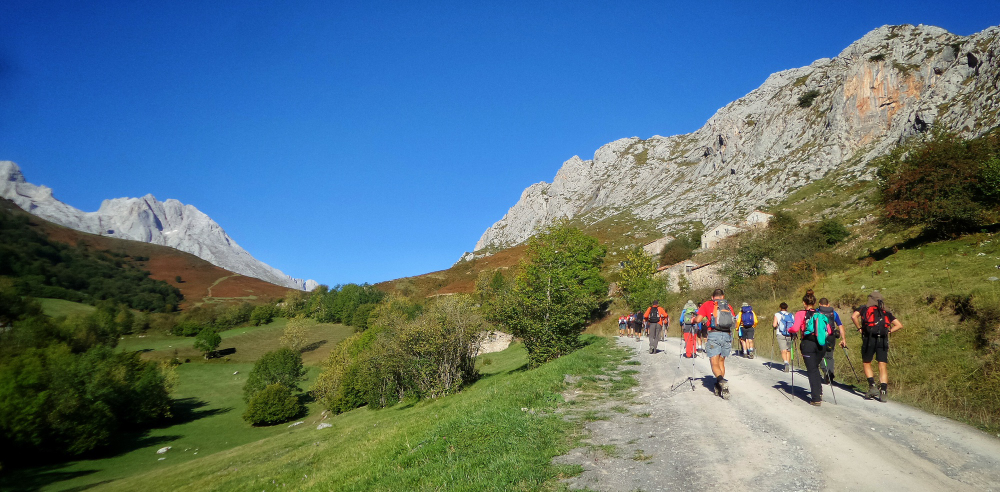
Precautions to be taken when practicing Nordic Walking
Patients with diseases of the musculoskeletal system must exercise carefully. In order to avoid complications when practicing Nordic walking with osteoarthritis of the hip, you should observe the following rules:
- Start your first exercise under the guidance of a trainer. He or she will point out mistakes and correct your walking technique.
- Choose the right sports equipment. The sticks should be made of light material and the handle should not slip out of your hand. For older Nordic Walkers, you should choose poles with a good grip.
- Gradually increase the duration of the exercise.
- Do a 10-minute warm-up before you start walking. Then do light stretching exercises.
- When running, wear comfortable athletic clothing and dress appropriately for the weather. In order to ensure the function of the foot and to protect the joints, you should buy sports shoes that firmly enclose the heel. The soles of the shoes should be firm but flexible.
- Do not eat before training, leave a break of 1-1.5 hours.
- When walking, keep your posture upright, do not lower your head, and keep your shoulders relaxed.
- In the case of unilateral pathology, the pressure should be applied to the pole opposite to the affected limb.
- To avoid breathing polluted air, exercise away from highways and roads with heavy traffic.
- Drink clean water while exercising.
Improper footwear, ill-fitting canes, or improper walking technique have no effect and walking becomes difficult. When you exercise, pay attention to how you feel. Keep your pace, don't overload your body and stop your workout when you feel tired. If you notice a deterioration such as B. pain, redness, or swelling that gets worse after walking, you should stop walking and consult your doctor.
Peculiarities of the Bubnovsky method
C. Bubnovsky is a well-known chiropractor and author of the kinesitherapy method. It is a type of exercise therapy aimed at eliminating all symptoms of knee osteoarthritis and restoring normal range of motion.

At the initial stage of exercise therapy, S. Bubnowski recommends that patients gradually reduce the dose of the drugs used, and then stop them altogether. The main motto of kinesitherapy is movement through pain.
The therapeutic effect of the technique is based on a sensible combination of passive and active movements, breathing exercises, physical therapy and various massage techniques. Tactics of kinesitherapy is conditionally divided into several stages:
- The goal of strength exercises is not to build muscle mass, but to learn to control the intensity of pain;
- Functional exercises can develop specific movement patterns, which is an excellent prevention against recurring pain;
- At the final stage, dynamic exercises are performed to completely eliminate stiffness.
At the first visit, the doctor explains that with osteoarthritis of the knee, it is not the joint that hurts, but the muscles that surround it. Therefore, by strengthening and improving the mobility of these muscles, it is possible to completely eliminate pain of any intensity and normalize the functioning of the knee.
When is the application recommended?
Osteoarthritis of the knee is a disease that has not yet been completely cured. It has not yet been possible to synthesize drugs that can rebuild the thinned and compacted cartilage layer in the knee. With the help of kinesitherapy, however, it is possible to lead an active life again, even with severe cartilage damage.
S method. Bubnowski is most therapeutically effective in the early stages of osteoarthritis. The situation is not aggravated by taking painkillers, with which you can easily get rid of the pain without straining. It is difficult to get a patient to move and endure pain when they know that taking a pill will be enough to eliminate it.
Regular exercises according to the Bubnovsky method are also recommended in the treatment of gonarthrosis after injury or surgery. This not only strengthens the muscles, but also makes the ligaments and tendons stronger and more flexible.
Kinesiotherapy is the most effective method of normalizing the joint, even with severe gonarthrosis, even if the joint is permanently deformed. Patients often arrive at rehabilitation centers with a cane or crutches and leave without recognizing their previous unstable gait.
How to do it
Before you start physiotherapy for osteoarthritis, you should definitely talk to a specialist. In this way, the optimal complex can be selected.
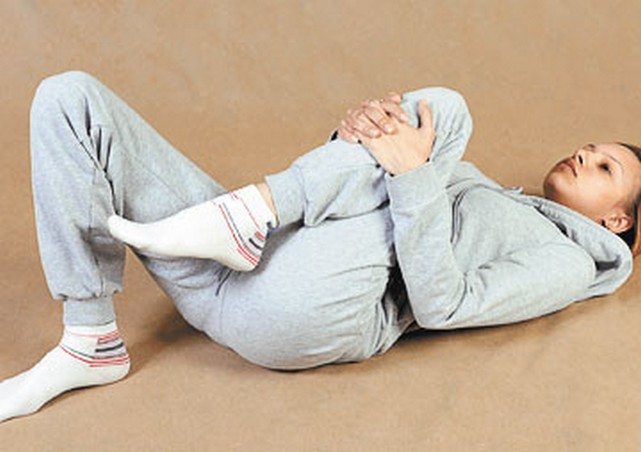
- Exercises should be performed only in remission - no exercises should be performed in acute conditions.
- The movements must be comfortable, and it is not advisable to force exercises or endure pain.
- It is best to do the exercises outdoors and combine them with massage or swimming.
- The exercises should be done regularly - it is better to exercise 20 minutes every day than an hour and a half once a week.
All movements are aimed at developing the knee joint affected by 1-2 degree gonarthrosis, strengthening and building muscles, normalizing metabolic processes in the joint. Stabilization of the patient's psycho-emotional state also plays an important role. Osteoarthritis exercises allow the pain sufferer to calm down and regain confidence in their ability to lead an active life free of pain.
In order for the therapeutic exercises to be fun, attention must be paid to everything:
- Comfortable shoes, preferably made of natural materials. The sole should be sufficiently firm and secure. Supinators must be present to support the foot.
- Comfortable clothing that does not restrict movement.
- A mat essential for the exercises.
- At home, a chair can serve as a support. It is important that it is reasonably stable.
Contraindications to the use of gonarthrosis
To stop the progression of gonarthrosis of the knee joint, it is necessary to abandon a number of movements and body positions:
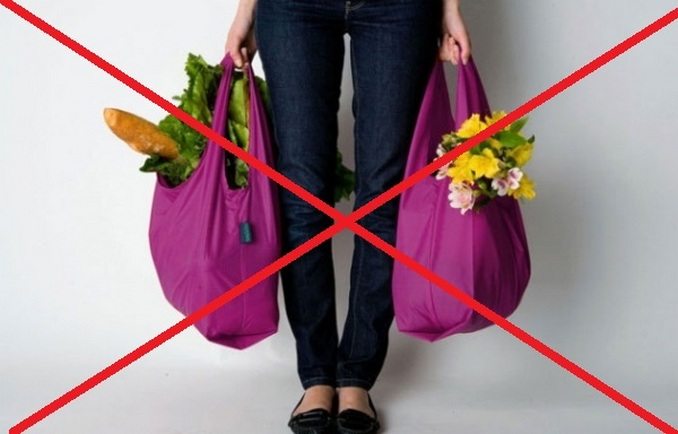
- Avoid heels and wear shoes with flat soles or minimal heels;
- Always use padded pads for sports activities and for all activities that put strain on the knees;
- Squatting or sitting on low chairs is not advisable as it reduces blood flow to the knee joint;
- Prolonged physical activity is contraindicated. All activities should be interspersed with periods of rest;
- It is best to sit on high chairs;
- If you need to get up from a seated position, it is best to first support yourself on your arms, putting all your weight on those arms, and then stand on your feet.
Invaluable benefits of movement
- Increases the range of motion of the joint.
- Reduces muscle tension and thus also prevents contractures (degeneration of muscles into scar tissue).
- Improves blood circulation in the affected joints, improves nutrition of the damaged cartilage.
- It has a positive effect on the entire body, makes people more mobile and improves their quality of life.
- Relieves the pain.

Six basic principles of correct movement
When performing the exercises, certain rules must be observed; The most important rule is 'do no harm'.
- Don't rush anything. The load and range of motion should be increased gradually; forcing the training load will only make things worse.
- The exercises should not cause pain; do not overcome them. Such a 'feat' can make you an invalid. The exercises should be performed in such a way that you feel fatigue in the muscle groups and no pain in the joints - then the LFC is performed correctly.
- Avoid overloading and chasing rapid progress. Remember the Polish folk wisdom: 'Too much is unhealthy' (literal translation: too much is bad).
- Regularity. Only if you exercise daily can you achieve visible results.
- Movement in knee osteoarthritis should only be performed during the period of remission. With an exacerbation of the disease, when the knee is swollen and swollen, it is better to let it rest comfortably.
- Load both joints evenly. Many patients ask themselves the question: 'How can I train if only one knee hurts? In the case of unilateral arthrosis, the patient instinctively begins to take care of the problematic joint, while the load on the healthy joint increases significantly. This means that osteoarthritis can also develop in the opposite knee, which is why physical exercises should be carried out for both joints.
The right exercise program with a physical therapist
Now we come to the crucial point: putting together an exercise program for the affected knee. The goal of physical therapy is to get the muscles to work without putting stress on the joint.
Below are exercises from the book 'Leg Pain' by Dr. Yevdokimenko.
Exercise 1
Static variant. Starting position (IP): Lie on your stomach, legs are straight, arms are along your body. Slowly straighten your knees and lift each leg 6 inches off the floor. Hold this position for 30-40 seconds. It is important to raise the leg using the strength of the thigh and glute muscles.
Dynamic variant. Same as the static variation, but keep the leg off the ground for 1-2 seconds. Do this exercise 10-12 times on each leg.
exercise 2
Same exercise, but now one leg is bent at a right angle at the knee. Raise one leg 4 inches off the floor and hold this position for 30-40 seconds, 1 rep on each leg without changing the bend angle. The effort should be made with the hamstrings and glutes.
Dynamic variant. Hold for 1-2 seconds and do 10-12 reps on each leg.
exercise 3
A variant of the well-known 'swallow' exercise. Perform the exercise as in exercise 1: lift both legs 10-15 cm off the floor, slowly straighten them out, and then bring them back together. Repeat the exercise 8-10 times without lowering your legs. As with the previous exercises, you only need to work the hamstrings and not the core.
exercise 4
Exercise: Lie on your side with your lower leg bent at the knee. Raise the straight top leg off the floor to a height of about 450 and hold this position for 30-60 seconds. 1 repetition for each leg.
exercise 5
IP: Sit in a chair. Straighten your knee and lift it off the floor as high as you can. Hold this position for 30-60 seconds. Perform 2-3 reps on each leg.
Types and uses of therapeutic exercises
In addition to the LFC, there are other types of exercises that patients with musculoskeletal disorders can do at home. In osteoarthritis, the degree of pathology is determined in order to select the appropriate method. See the table below for information.
| Types of therapeutic exercises | Description |
| After Bubnovsky | Used for pain in the spine, osteochondrosis, intervertebral hernias, scoliosis. Helps with pain and contractures in the neck, knees. |
| From Gitta | Treatment of osteoarthritis of the ankles, hands, fingers, sternoclavicular ribs, sacroiliac joints, jaws. Suitable for the treatment of gonarthrosis, coxarthrosis, eliminating the crunch. |
| Dzhamaldinov method | Therapy of arthrosis in all joint cavities, pain relief. Suitable for the treatment of post-traumatic arthritis. |
| Yevdokimenko exercises | Indicated for restricted movement, pain, arthritis, arthrosis, circulatory disorders of the tissue, destruction of the hip joint structure |
| Popov | These exercises serve to normalize blood circulation and restore the function of the shoulder joint. |
| Exercises for knees, hips and shoulders | Increases blood circulation in the joint, relieves pain in arthrosis and arthritis |
All physical exercises for healing are prescribed by an orthopedist. Some movements are not allowed in certain diseases. An investigation is carried out beforehand.

Bubnovsky method
Proper breathing, the LFC technique and the use of additional physiotherapy treatments are taught during the Bubnovsky exercises. The exercises for arthrosis in the knee help to eliminate the pain. Each set of exercises includes a warm-up and techniques to normalize blood circulation. The following techniques are used to reduce the lack of blood flow to the joints in osteoarthritis.
What is the impact of physical activity?
Doctors advise not to restrict mobility, even if you suffer from diseases of the musculoskeletal system. The exception is when the pathology is severe, so any movement is difficult and causes severe pain. Each technique has a number of contraindications that your physiotherapist or orthopedist will tell you about if they have prescribed it. For example, an acute systemic infection, fever, worsening of osteoarthritis.
Daily exercise or other physical activity increases blood flow, provides nutrients, and promotes tissue regeneration.
After exercise, a temporary rest is recommended. This is especially true for patients whose arthrosis is not in the initial stage, but in the second or third stage.

Some patients believe that exercise alone is enough to neutralize the disease. This is a mistake, because doctors recommend a comprehensive concept of medication, physiotherapy with heat and physical therapy. Then the disease will slow down. Even with comprehensive treatment, the arthritis that has started will not completely go away. However, it is possible to keep them under control.
Especially if you regularly visit the doctor to conduct instrumental examinations and adjust the methods of treatment. Regular examinations of the joints by X-ray, ultrasound and biopsy, followed by histological examination of the contents of the cavity are mandatory.
Rehabilitation doctor Shishonin explains how to get rid of joint pain without pills
Joint pain is a problem that most people experience sooner or later. Many sufferers try to numb the symptoms with painkillers, but this only helps in the short term and prevents the pain from arising in the first place. People with joint pain can also help themselves without tablets by learning simple self-massage techniques. Rehabilitation doctor Aleksandr Shishonin told aif.ru.

'What happens when our joints and spine hurt? People start to move less because it hurts. Due to the lack of exercise, the metabolism is disturbed, fewer hormones are produced, blood flow is disturbed, the circulatory system is exhausted, the movements of the cells in our body are disturbed, even at the micro level. The heart, the intestines, the lungs, the kidneys suffer…. It turns out that 'ordinary' joint pain leads to various internal diseases.' – said Shishonin.
He states that a continuous cellular process takes place in the joints. Old, worn out cells are discarded and make way for new cells. In order for this process to function properly and to maintain an optimal internal environment in the joint, good blood flow is required, which is achieved through movement.
In general, pain and poor mobility in the joints result from two types of processes. In the first case, the nutrition of the joint is impaired due to hypodynamics. In such situations, dry arthritis occurs, in which the joint, although not red, is painful.
In the second case, the joint can become inflamed due to reduced excretory function of the synovial membrane and the accumulation of toxic waste products. This problem is also associated with hypodynamia, but in this case there is also a disruption in cellular metabolism in the joint. The cause of inflammation can be of an internal nature, so the treatment tactics in this case will not only restore joint mobility, but also help to find the cause.
Beat
This type of self-massage is suitable if the joint is painful and swollen. To perform the massage, wrap an elastic bandage around the joint (not too tight), take a massage stick and lightly tap the skin at a distance of 3-5 cm around the joint. This massage improves blood circulation and speeds up the reduction of swelling. A single session can last between 5 and 15 minutes and the massage can be repeated 2 to 3 times a day.
This type of massage is suitable for joint pain that occurs with movement. The joint is wrapped with an elastic bandage and the stick is rolled by hand. The stick should be rolled on both the outside and inside of the joint while rotating the limb. Rolling for 10-15 minutes promotes blood circulation and relieves pain.
Compression is used when the joint is painful but not swollen, which is common with osteoarthritis. Wrap an elastic bandage around the painful joint, press the end of the massage stick into the joint and twist gently. Work on all painful points of the joint, both front and back. The massage can be repeated 2-3 times a day, allowing 10-15 minutes for each session. This technique stimulates blood flow and improves the lubricating properties of synovial fluid, which is extremely important in osteoarthritis.
Coping with obesity and diet

Numerous studies have shown that overweight people have a threefold increased risk of developing osteoarthritis. This is not only because obesity increases the stress on the joints, but also because excess fat can trigger many pathological processes in the body that lead to serious diseases such as type 2 diabetes and cardiovascular diseases, which are spread can have a negative effect on the joints.
Diet for the prevention of osteoarthritis is aimed at saturating the body with the nutrients necessary for the proper functioning of articular cartilage and slowing down the degenerative processes in the joints. Adhering to the following basic rules will not only help keep your joints in good shape, but also prevent weight gain:
- reducing calorie intake by eliminating or limiting fatty meat and poultry;
- consume enough low-fat dairy products to supply calcium to bones;
- Increasing the proportion of grains, vegetables and fruits to provide the body with the vitamins and micronutrients that the joints need.
When it comes to nutrition, special attention should be paid to products and foods containing natural substances that protect and strengthen cartilage tissue. One of these substances is collagen, a protein found in the cartilage, ligaments and skin of animals and fish. To this end, include cold cuts, casseroles (especially fish), fruit jellies and other foods that contain gelatin - a modified collagen - in your diet.
Physical activity to prevent arthritis
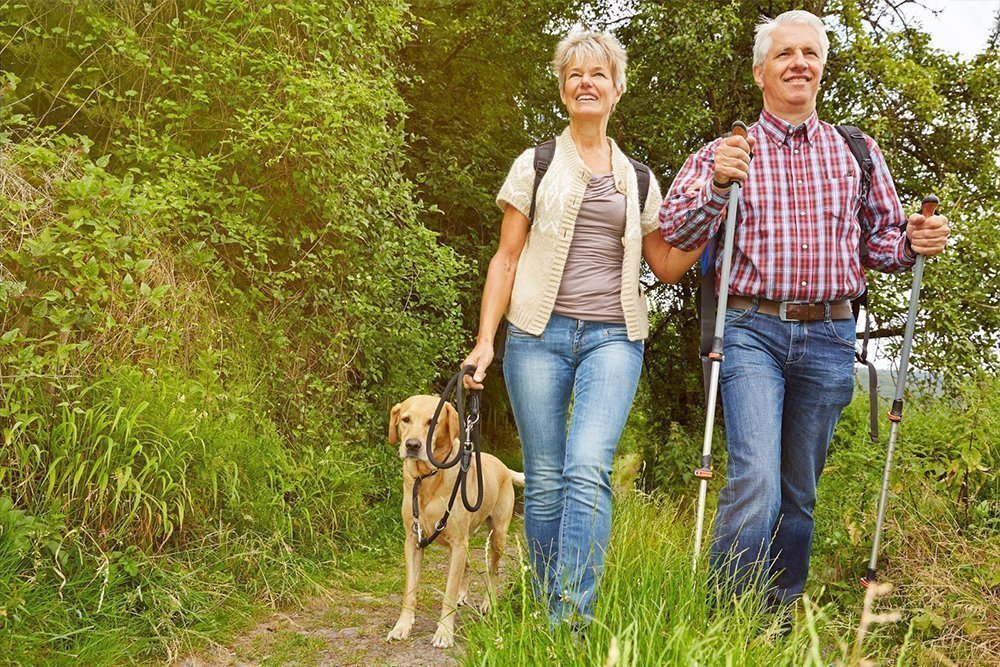
A sedentary lifestyle is one of the main enemies of human health, including the musculoskeletal system. Physical activity, on the other hand, helps to achieve a number of important goals related to joint maintenance and general well-being at the same time:
- improves blood supply and tissue nutrition;
- normalizes metabolic processes and prevents weight gain
- builds muscle, which in turn strengthens the skeletal system;
- trains all body systems and increases immunity;
- improves well-being.
To keep your joints in good shape, you shouldn't put too much stress on them. However, that doesn't mean you should give up physical activity. Exercise is absolutely necessary for the joints, but it should be moderate and appropriate to fitness, age and other individual differences.
Experts say walking is the best way to prevent knee osteoarthritis at any age and recommend at least 6,000 steps a day. Swimming is very useful if the movement is carried out in the absence of negative effects of body weight on the bones. Any type of sport or activity that requires movement (dancing, gardening, playing with children, etc.), if practiced regularly, can prevent osteoarthritis and keep joints healthy for a long time.
Read more:- Knee splint for knee arthrosis.
- Unsteady gait in the elderly.
- Immobilization of the knee in osteoarthritis.
- positioning of the feet.
- Ellipsoid in knee osteoarthritis.
- Orthopedic patella in osteoarthritis of the knee.
- A wobbly gait means.
- Tiptoe walking.
